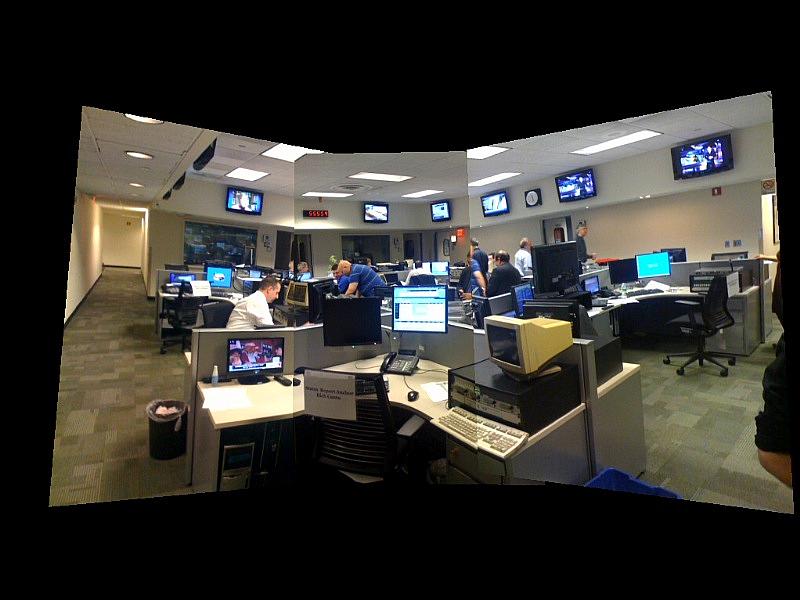When the inequities we see in our communities show up in our newsrooms, too
As a journalist, you get used to people giving you PR responses to questions — euphemisms, half-answers, dodging or flat-out refusals to answer. This can be especially true for hot-button issues. Leaders are expected to say “the right thing,” which is often not the honest thing.
Even in the journalism industry, a place where truth is held up as our highest ideal, leaders have a difficult time admitting fault, failure, malfeasance or negligence. Corporations set big goals on diversity, equity and inclusion (DEI), and repeat them in their marketing campaigns. However, when asked about the details or what’s being accomplished, responses are often murky at best.
When I began my fellowship project for USC’s Center for Health Journalism this year, the newsroom I was working in wasn’t diverse. It wasn’t a secret: The Desert Sun published an article about its diversity statistics in August 2020, and it remains something the Palm Springs newsroom needs to improve. The Sun’s owner, Gannett, has set bold goals to ensure newspaper staff start to look more like the communities they cover. It is also something the company’s union shops are fighting for.
Among the diversity issues at The Desert Sun is a lack of Spanish speakers. Within its editorial team of about 20, there is one native bilingual speaker on staff who speaks Spanish. The majority of the staff identifies as white (nearly 70% in 2020). By contrast, just 39% of the Coachella Valley — The Desert Sun’s coverage area — identified as white and non-Hispanic in 2020, according to the newspaper’s reporting. And there are many residents in the area who aren’t fluent in English, which is the only language offered in the print publication.
The Desert Sun isn’t alone in this. But how are we supposed to cover the community as a whole when we can’t communicate with a large portion of its residents?
This is one of the barriers I faced when reporting out my fellowship project about senior centers in the area neglecting their Hispanic and Spanish-speaking populations. Ultimately, my story focused on a city in the valley with some of the highest rates of Spanish-speaking residents — and how they’re trying to address this problem through better outreach. Due to the nature of the story, I needed to interview seniors who spoke only Spanish, but I’m not fluent in Spanish.
This made me question whether I should try to do the story at all.
How could I make it work? Did I have any right to do this story? Is there someone else better suited for it?
If I didn’t do the story, though, no one at The Desert Sun would either — at least not anytime soon. There wasn’t time for anyone else to do it, especially not our bilingual reporter, who already covers most news about the Hispanic community and shouldn’t be called on to serve as the newsroom's default interpreter. There also wasn’t a budget for interpreters or freelancers.
The story needed to be told, so I had to get creative. Largely, I relied on the generosity of bilingual community members, my sources and a newsroom intern. Some interviews became a safe space where I practiced speaking Spanish and my sources practiced speaking English. It required a lot of time, vulnerability and trust.
For more than six months, I followed Laura Gutierrez, the Cathedral City Senior Center’s outreach coordinator, checking in with her again and again as she went to churches, apartment communities and low-income neighborhoods inviting Spanish speakers — and anyone else she met — into the center.
Making progress on the center’s diversity took a concerted effort. It took money, other resources and a few very devoted individuals to lead the way. But, even there, it isn’t perfect and there’s still work to do. The workload may have actually increased, since now that the senior center has started the outreach, leaders are better able to see the community’s needs.
For example, Gutierrez spoke to some people — adults of all ages, not just seniors — who needed their mail translated or, even if a translation was provided by the sender, read to them. They had never learned to read in Spanish, let alone English.
Until Gutierrez pointed this out to me, I had never thought to ask about this.
The Desert Sun has published articles about low literacy rates in the Coachella Valley, but the data just focuses on literacy in English. This points to gaps in the original data collection as well as its analysis.
Another example, which I admit was pointed out to me by a colleague of color, concerns media reports on the gender pay gap. When reporting on this subject, many publications compare earnings of women to men as an overall figure: “Women earn 83 cents for every dollar earned by men.” The average personal income earned by women 15 and older working full-time and year-round in 2021 was just 72% of that of men in the U.S., according to the census.
For Black, Hispanic and Native American women, that gap is even larger.
Because the data doesn’t include part-time or seasonal workers, more than 28 million women workers — mostly women of color — weren’t counted, according to the National Partnership for Women & Families.
The examples are too many to list here, but we know that the COVID-19 pandemic made obvious the limitations in local, statewide and national data collection. It highlighted the disparities in our health and social infrastructure. And, for those who didn’t already know, it showed how increasing diversity and inclusion is not only better for people, it’s better for business.
What I learned through reporting this project is that to even begin to fix the problems, we must first admit they exist. Then there must be a concerted effort and individuals invested in that effort.


